文章目录
1、简介
https://pypi.org/project/speechrecognition/
https://github.com/uberi/speech_recognition
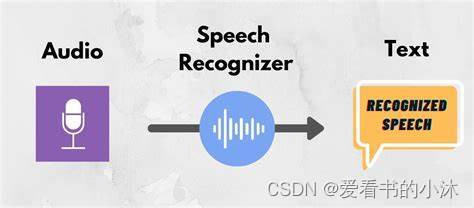
speech recognition engine/api 支持如下接口:
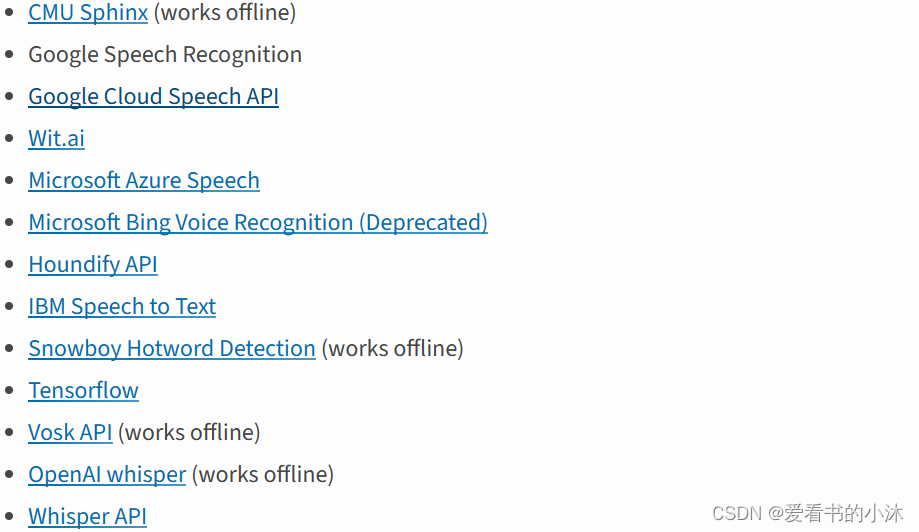
recognize_bing():microsoft bing speech
recognize_google(): google web speech api
recognize_google_cloud():google cloud speech - requires installation of the google-cloud-speech package
recognize_houndify(): houndify by soundhound
recognize_ibm():ibm speech to text
recognize_sphinx():cmu sphinx - requires installing pocketsphinx
recognize_wit():wit.ai
以上几个中只有 recognition_sphinx()可与cmu sphinx 引擎脱机工作, 其他六个都需要连接互联网。另外,speechrecognition 附带 google web speech api 的默认 api 密钥,可直接使用它。其他的 api 都需要使用 api 密钥或用户名/密码组合进行身份验证。
2、安装和测试
-
python 3.8+ (required)
-
pyaudio 0.2.11+ (required only if you need to use microphone input, microphone)
-
pocketsphinx (required only if you need to use the sphinx recognizer, recognizer_instance.recognize_sphinx)
-
google api client library for python (required only if you need to use the google cloud speech api, recognizer_instance.recognize_google_cloud)
-
flac encoder (required only if the system is not x86-based windows/linux/os x)
-
vosk (required only if you need to use vosk api speech recognition recognizer_instance.recognize_vosk)
-
whisper (required only if you need to use whisper recognizer_instance.recognize_whisper)
-
openai (required only if you need to use whisper api speech recognition recognizer_instance.recognize_whisper_api)
2.1 安装python
https://www.python.org/downloads/
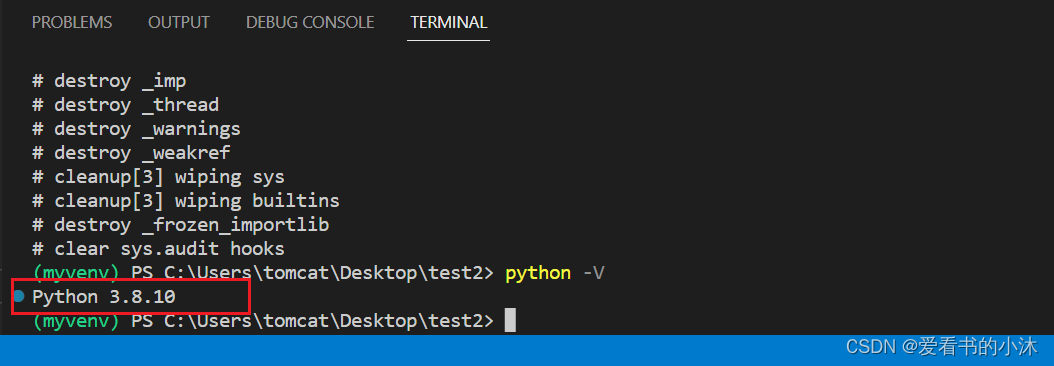
2.2 安装speechrecognition
安装库speechrecognition:
#python -m pip install --upgrade pip
#pip install 包名 -i https://pypi.tuna.tsinghua.edu.cn/simple/
#pip install 包名 -i http://pypi.douban.com/simple/ --trusted-host pypi.douban.com
#pip install 包名 -i https://pypi.org/simple
pip install speechrecognition

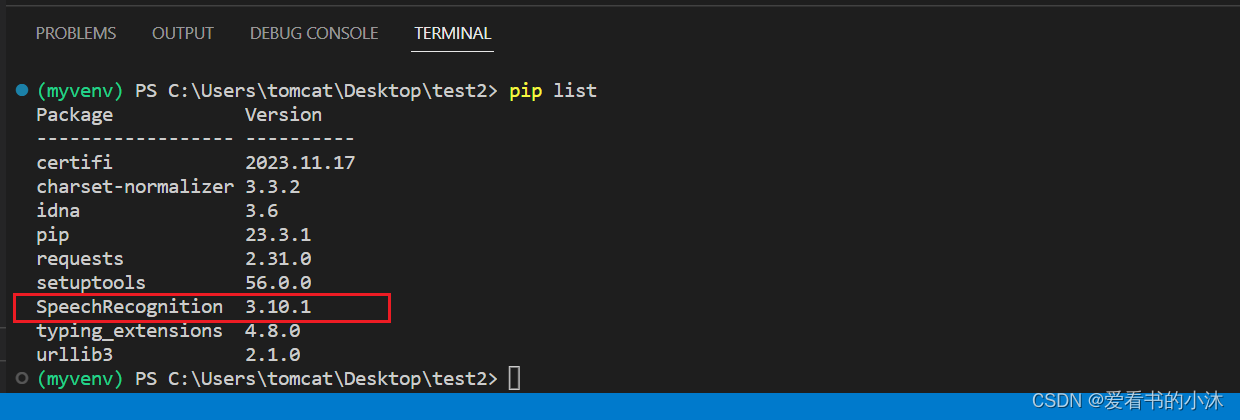
import speech_recognition as sr
print(sr.__version__)

麦克风的特定于硬件的索引获取:
import speech_recognition as sr
for index, name in enumerate(sr.microphone.list_microphone_names()):
print("microphone with name \"{1}\" found for `microphone(device_index={0})`".format(index, name))

2.3 安装pyaudio
pip install pyaudio

2.4 安装pocketsphinx(offline)
pip install pocketsphinx
或者https://www.lfd.uci.edu/~gohlke/pythonlibs/#pocketsphinx找到编译好的本地库文件进行安装。

在这里使用的是recognize_sphinx()语音识别器,它可以脱机工作,但是必须安装pocketsphinx库.
若要进行中文识别,还需要两样东西。
1、语音文件(speechrecognition对文件格式有要求);
speechrecognition支持语音文件类型:
wav: 必须是 pcm/lpcm 格式
aiff
aiff-c
flac: 必须是初始 flac 格式;ogg-flac 格式不可用
2、中文声学模型、语言模型和字典文件;
pocketsphinx需要安装的中文语言、声学模型。
https://sourceforge.net/projects/cmusphinx/files/acoustic%20and%20language%20models/mandarin/

下载cmusphinx-zh-cn-5.2.tar.gz并解压:


在python安装目录下找到lib\site-packages\speech_recognition:

点击进入pocketsphinx-data文件夹,并新建文件夹zh-cn:
在这个文件夹中添加进入刚刚解压的文件,需要注意:把解压出来的zh_cn.cd_cont_5000文件夹重命名为acoustic-model、zh_cn.lm.bin命名为language-model.lm.bin、zh_cn.dic中dic改为pronounciation-dictionary.dict格式。

编写脚本测试:
import speech_recognition as sr
r = sr.recognizer() #调用识别器
test = sr.audiofile("chinese.flac") #导入语音文件
with test as source:
# r.adjust_for_ambient_noise(source)
audio = r.record(source) #使用 record() 从文件中获取数据
type(audio)
# c=r.recognize_sphinx(audio, language='zh-cn') #识别输出
c=r.recognize_sphinx(audio, language='en-us') #识别输出
print(c)
import speech_recognition as sr
# obtain path to "english.wav" in the same folder as this script
from os import path
audio_file = path.join(path.dirname(path.realpath(__file__)), "english.wav")
# audio_file = path.join(path.dirname(path.realpath(__file__)), "french.aiff")
# audio_file = path.join(path.dirname(path.realpath(__file__)), "chinese.flac")
# use the audio file as the audio source
r = sr.recognizer()
with sr.audiofile(audio_file) as source:
audio = r.record(source) # read the entire audio file
# recognize speech using sphinx
try:
print("sphinx thinks you said " + r.recognize_sphinx(audio))
except sr.unknownvalueerror:
print("sphinx could not understand audio")
except sr.requesterror as e:
print("sphinx error; {0}".format(e))

import speech_recognition as sr
recognizer = sr.recognizer()
with sr.microphone() as source:
# recognizer.adjust_for_ambient_noise(source)
audio = recognizer.listen(source)
c=recognizer.recognize_sphinx(audio, language='zh-cn') #识别输出
# c=r.recognize_sphinx(audio, language='en-us') #识别输出
print(c)
import speech_recognition as sr
# obtain audio from the microphone
r = sr.recognizer()
with sr.microphone() as source:
print("say something!")
audio = r.listen(source)
# recognize speech using sphinx
try:
print("sphinx thinks you said " + r.recognize_sphinx(audio))
except sr.unknownvalueerror:
print("sphinx could not understand audio")
except sr.requesterror as e:
print("sphinx error; {0}".format(e))

2.5 安装vosk (offline)
python3 -m pip install vosk

您还必须安装 vosk 模型:
以下是可供下载的模型。您必须将它们放在项目的模型文件夹中,例如“your-project-folder/models/your-vosk-model”
https://alphacephei.com/vosk/models

在测试脚本的所在文件夹,新建model子文件夹,然后把上面下载的模型解压到里面如下:


编写脚本:
import speech_recognition as sr
from vosk import kaldirecognizer, model
r = sr.recognizer()
with sr.microphone() as source:
audio = r.listen(source, timeout=3, phrase_time_limit=3)
r.vosk_model = model(model_name="vosk-model-small-cn-0.22")
text=r.recognize_vosk(audio, language='zh-cn')
print(text)

2.6 安装whisper(offline)
pip install zhconv
pip install whisper
pip install -u openai-whisper
pip3 install wheel
pip install soundfile
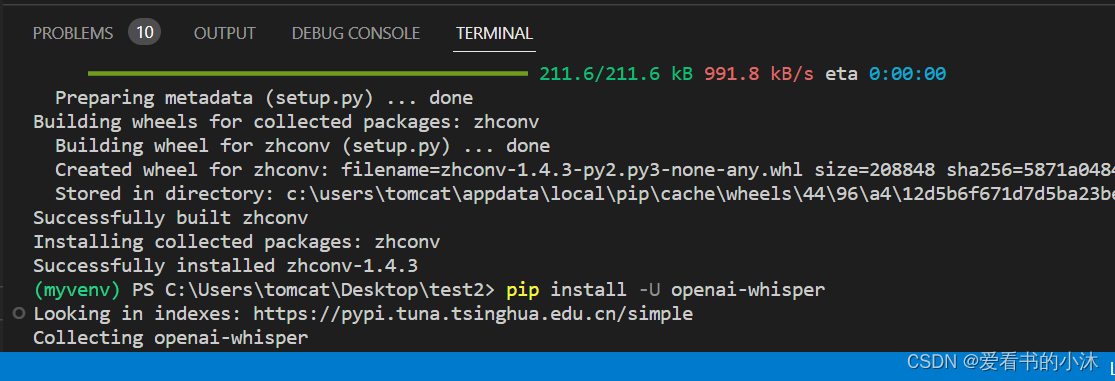
编写脚本:
import speech_recognition as sr
from vosk import kaldirecognizer, model
r = sr.recognizer()
with sr.microphone() as source:
audio = r.listen(source, timeout=3, phrase_time_limit=5)
# recognize speech using whisper
try:
print("whisper thinks you said: " + r.recognize_whisper(audio, language="chinese"))
except sr.unknownvalueerror:
print("whisper could not understand audio")
except sr.requesterror as e:
print("could not request results from whisper")

3 测试
3.1 命令
python -m speech_recognition

3.2 fastapi
import json
import os
from pprint import pprint
import speech_recognition
import torch
import uvicorn
from fastapi import fastapi, httpexception
from pydantic import basemodel
import soundfile
import whisper
import vosk
class responsemodel(basemodel):
path: str
app = fastapi()
def get_path(req: responsemodel):
path = req.path
if path == "":
raise httpexception(status_code=400, detail="no path provided")
if not path.endswith(".wav"):
raise httpexception(status_code=400, detail="invalid file type")
if not os.path.exists(path):
raise httpexception(status_code=404, detail="file does not exist")
return path
@app.get("/")
def root():
return {"message": "speech-recognition api"}
@app.post("/recognize-google")
def recognize_google(req: responsemodel):
path = get_path(req)
r = speech_recognition.recognizer()
with speech_recognition.audiofile(path) as source:
audio = r.record(source)
return r.recognize_google(audio, language='ja-jp', show_all=true)
@app.post("/recognize-vosk")
def recognize_vosk(req: responsemodel):
path = get_path(req)
r = speech_recognition.recognizer()
with speech_recognition.audiofile(path) as source:
audio = r.record(source)
return json.loads(r.recognize_vosk(audio, language='ja'))
@app.post("/recognize-whisper")
def recognize_whisper(req: responsemodel):
path = get_path(req)
r = speech_recognition.recognizer()
with speech_recognition.audiofile(path) as source:
audio = r.record(source)
result = r.recognize_whisper(audio, language='ja')
try:
return json.loads(result)
except:
return {"text": result}
if __name__ == "__main__":
host = os.environ.get('host', '0.0.0.0')
port: int = os.environ.get('port', 8080)
uvicorn.run("main:app", host=host, port=int(port))
3.3 google
import speech_recognition as sr
import webbrowser as wb
import speak
chrome_path = 'c:/program files (x86)/google/chrome/application/chrome.exe %s'
r = sr.recognizer()
with sr.microphone() as source:
print ('say something!')
audio = r.listen(source)
print ('done!')
try:
text = r.recognize_google(audio)
print('google thinks you said:\n' + text)
lang = 'en'
speak.tts(text, lang)
f_text = 'https://www.google.co.in/search?q=' + text
wb.get(chrome_path).open(f_text)
except exception as e:
print (e)
3.4 recognize_sphinx
import logging
import speech_recognition as sr
def audio_sphinx(filename):
logging.info('开始识别语音文件...')
# use the audio file as the audio source
r = sr.recognizer()
with sr.audiofile(filename) as source:
audio = r.record(source) # read the entire audio file
# recognize speech using sphinx
try:
print("sphinx thinks you said: " + r.recognize_sphinx(audio, language='zh-cn'))
except sr.unknownvalueerror:
print("sphinx could not understand audio")
except sr.requesterror as e:
print("sphinx error; {0}".format(e))
if __name__ == "__main__":
logging.basicconfig(level=logging.info)
wav_num = 0
while true:
r = sr.recognizer()
#启用麦克风
mic = sr.microphone()
logging.info('录音中...')
with mic as source:
#降噪
r.adjust_for_ambient_noise(source)
audio = r.listen(source)
with open(f"00{wav_num}.wav", "wb") as f:
#将麦克风录到的声音保存为wav文件
f.write(audio.get_wav_data(convert_rate=16000))
logging.info('录音结束,识别中...')
target = audio_sphinx(f"00{wav_num}.wav")
wav_num += 1
3.5 语音生成音频文件
- 方法1:
import speech_recognition as sr
# use speechrecognition to record 使用语音识别包录制音频
def my_record(rate=16000):
r = sr.recognizer()
with sr.microphone(sample_rate=rate) as source:
print("please say something")
audio = r.listen(source)
with open("voices/myvoices.wav", "wb") as f:
f.write(audio.get_wav_data())
print("录音完成!")
my_record()
- 方法2:
import wave
from pyaudio import pyaudio, paint16
framerate = 16000 # 采样率
num_samples = 2000 # 采样点
channels = 1 # 声道
sampwidth = 2 # 采样宽度2bytes
filepath = 'voices/myvoices.wav'
def save_wave_file(filepath, data):
wf = wave.open(filepath, 'wb')
wf.setnchannels(channels)
wf.setsampwidth(sampwidth)
wf.setframerate(framerate)
wf.writeframes(b''.join(data))
wf.close()
#录音
def my_record():
pa = pyaudio()
#打开一个新的音频stream
stream = pa.open(format=paint16, channels=channels,
rate=framerate, input=true, frames_per_buffer=num_samples)
my_buf = [] #存放录音数据
t = time.time()
print('正在录音...')
while time.time() < t + 10: # 设置录音时间(秒)
#循环read,每次read 2000frames
string_audio_data = stream.read(num_samples)
my_buf.append(string_audio_data)
print('录音结束.')
save_wave_file(filepath, my_buf)
stream.close()

第三届机器人、人工智能与智能控制国际会议(raiic 2024)将于2024年7月5-7日中国·绵阳举行。 raiic 2024是汇聚业界和学术界的顶级论坛,会议将邀请国内外著名专家就以传播机器人、人工智能与智能控制领域的技术进步、研究成果和应用做专题报告,同时进行学术交流。诚邀国内外相关高校和科研院所的科研人员、企业工程技术人员等参加会议。
大会网站:更多会议详情
时间地点:中国-绵阳|2024年7月5-7日

由河南省科学院、河南大学、郑州航空工业管理学院主办,河南省产学研人工智能研究院、河南大学人工智能学院、郑州航空工业管理学院计算机学院承办的第四届人工智能,大数据与算法国际学术会议 (caibda 2024)将于2024年7月5-7日于中国郑州隆重举行。caibda 2024致力于为人工智能,大数据与算法等相关领域的学者,工程师和从业人员提供一个分享最新研究成果的平台。
大会网站:更多会议详情
时间地点:中国-郑州|2024年7月5-7日

2024第四届人工智能、自动化与高性能计算国际会议(aiahpc 2024)将于2024年7月19-21日在中国·珠海召开。
大会网站:更多会议详情
时间地点:中国珠海-中山大学珠海校区|2024年7月19-21日
结语
如果您觉得该方法或代码有一点点用处,可以给作者点个赞,或打赏杯咖啡;╮( ̄▽ ̄)╭
如果您感觉方法或代码不咋地//(ㄒoㄒ)//,就在评论处留言,作者继续改进;o_o???
如果您需要相关功能的代码定制化开发,可以留言私信作者;(✿◡‿◡)
感谢各位大佬童鞋们的支持!( ´ ▽´ )ノ ( ´ ▽´)っ!!!




发表评论